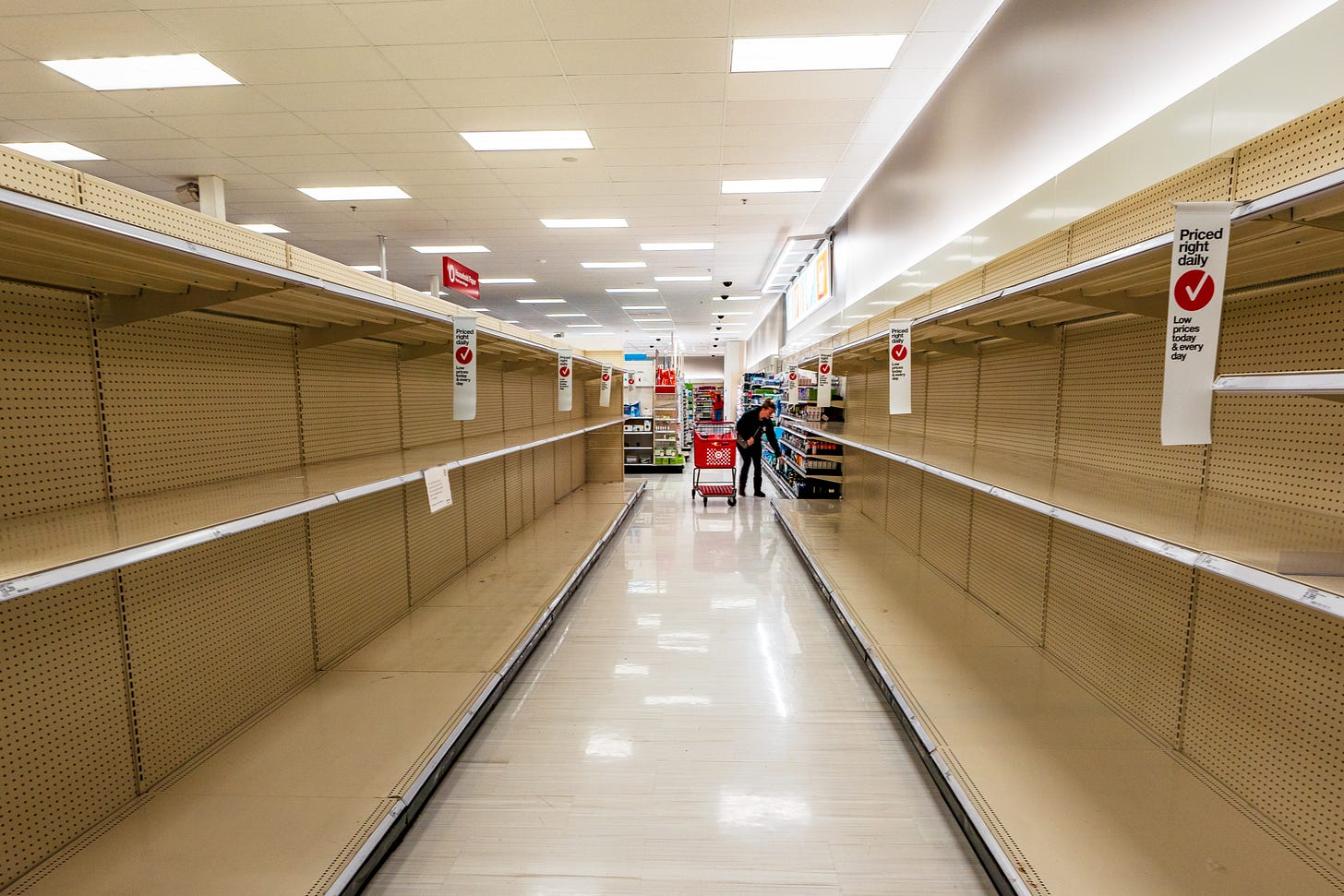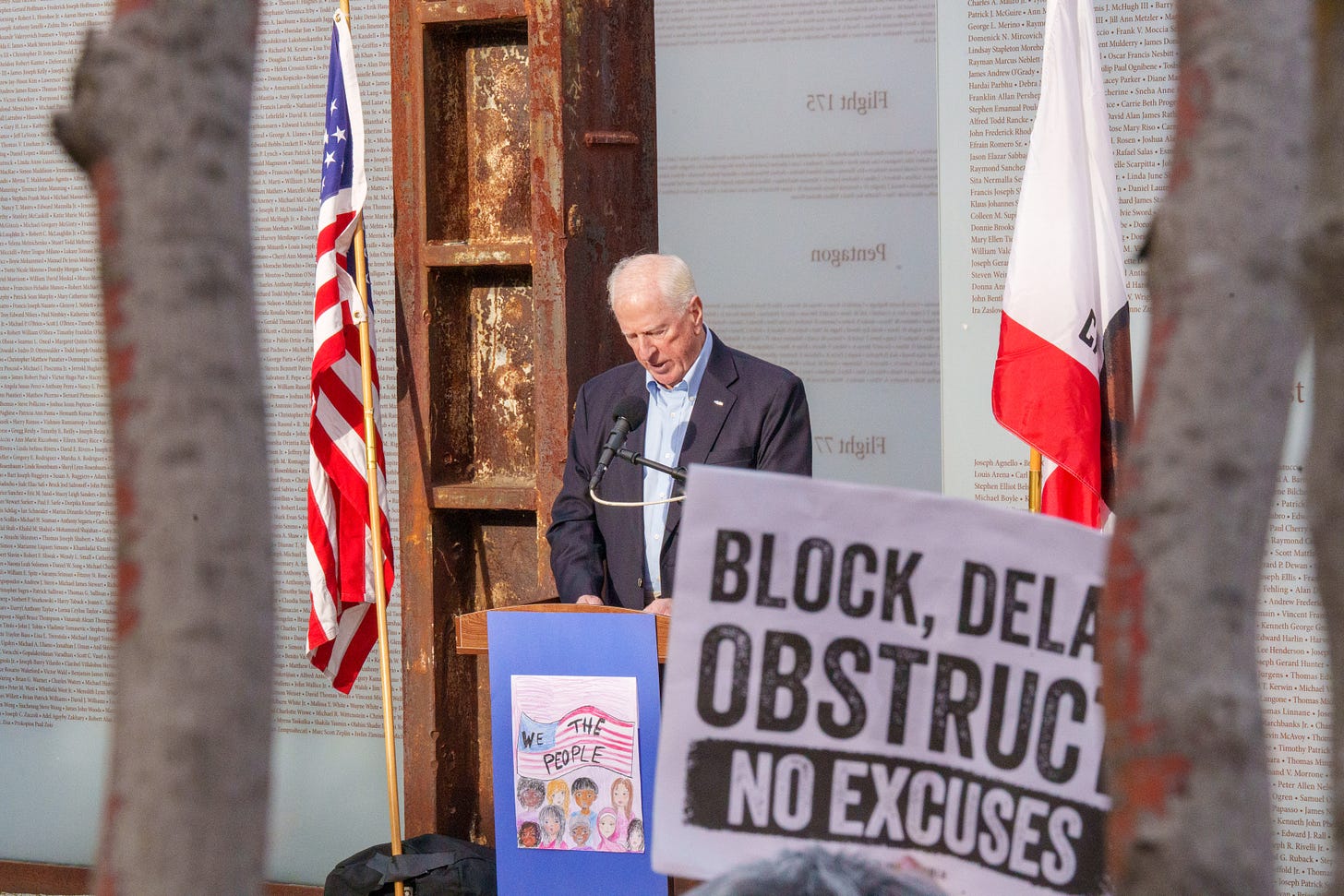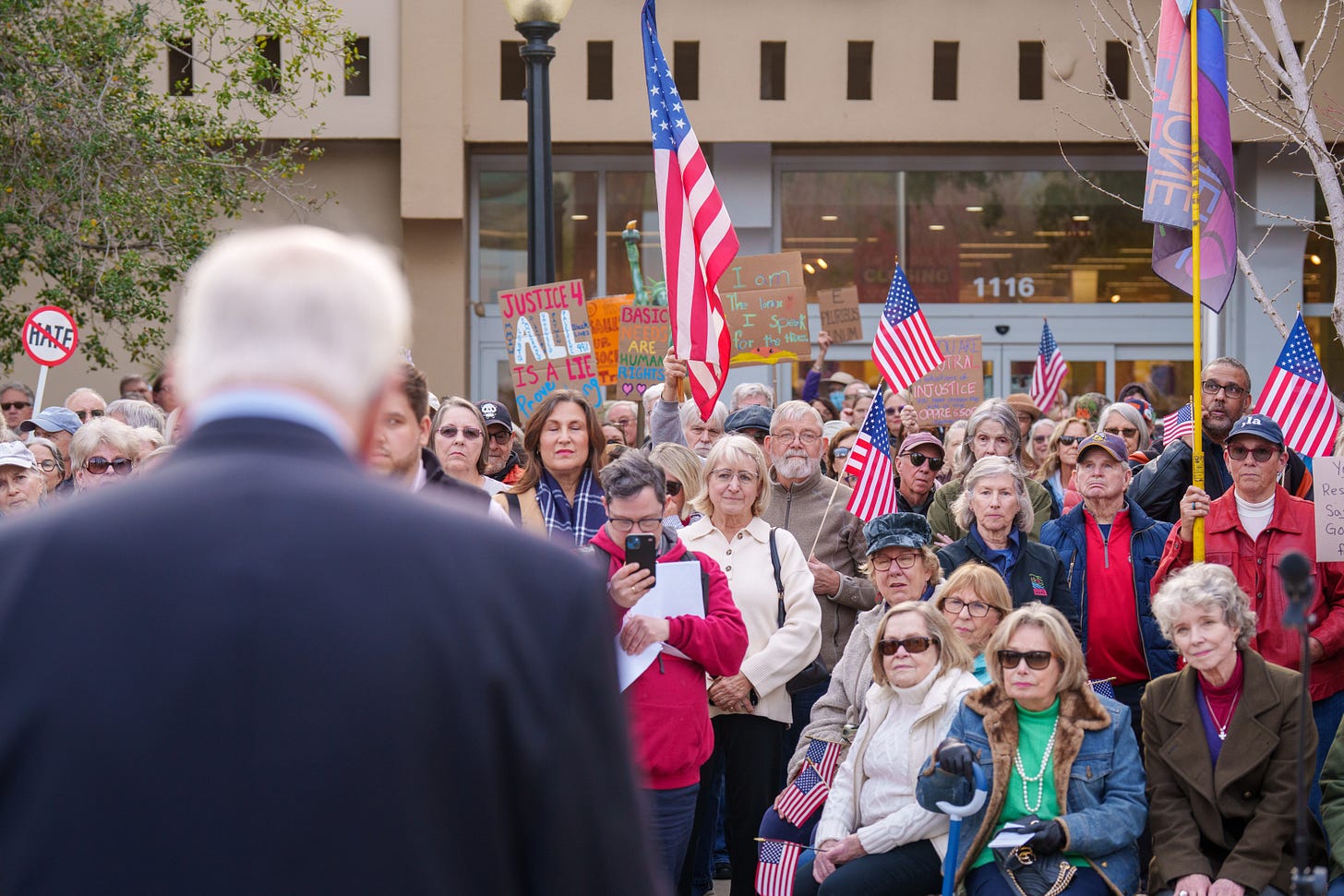Support Napa Valley Features – Become a Paid Subscriber Today
If you’re reading this, you care about independent, locally owned, ad-free journalism — reporting that puts our region’s stories first, not corporate interests or clickbait.
As local newsrooms are increasingly bought by billionaires, scaled back or absorbed into media conglomerates, communities lose original reporting and are left with more syndicated content. Your support keeps quality regional journalism alive.
Join a community that values in-depth, independent reporting. Become a paid subscriber today — and if you already are, thank you. Help us grow by liking, commenting and sharing our work.
The Spotlight
Welcome to “Under the Hood,” our exclusive Saturday series for Napa Valley Features paid subscribers. This week, we delve into the growing economic consequences of deepening political division and how consumer spending, corporate loyalty and global investment are being reshaped by ideological fault lines.
Additionally, we’re diving into the latest data from our readers’ polls and providing insights from our economic dashboard, covering local Napa Valley, U.S. and global markets.
In addition, we feature "What We Are Reading," a section with a handpicked list of recent articles that provides a variety of viewpoints on issues important to our community and beyond.
“What We Are Reading” quotes of the day:
“We think with global warming this area of Napa is becoming very, very interesting. Coombsville gives wines, in my opinion, that [are] based mostly on elegance, with intensity. It has personality.” – from Piero Antinori in "Antinori Family Purchases Napa’s Arcadia Vineyard, Longtime Grape Source for Stag’s Leap Wine Cellars," Wine Spectator.
"We’re in a situation where we’re over-planted for the market capacity that we have and the end-of-the-line result is that some people have to get out of the business." – from Jeff Bitter in "California Vineyards 'Over-Planted' by More Than 20,000 Hectares," Wine Business.
"The process was ‘severely flawed' and [showed] ‘a troubling pattern of corporate governance issues under Bronco’s new management.'" – from Wine Hooligans minority shareholders in "Two Buck Chuck Vintner Eyes Santa Rosa Brands," North Bay Business Journal.
"You roll back these initiatives what is that going to do to our economy, our supply chains, our workforce?" – from Liz Perez in "Funding for Small Businesses — a Big Source of Jobs — at Risk Under Trump," CalMatters.
"These things impact not just our wine community but also hospitality workers, agriculture workers, suppliers, vendors, consumers and other communities at large." – from Michael Haney in "North Coast Wine Industry Braces for Trump’s Tariffs," The Press Democrat.
Decanting the Data:
How Politics is Reshaping the Economy
By Tim Carl
NAPA VALLEY, Calif. — It doesn’t matter where you fall on the political spectrum, the impact of extreme division is economic devastation.
With President Donald Trump’s re-election following one of the most polarizing elections in modern history, the economic fallout of deepening political division is no longer theoretical — it is unfolding in real time. The administration’s sweeping overhaul of the federal government, driven by Project 2025, has already led to mass firings, ideological purges and growing concerns over manipulated economic data — but that is only part of the crisis.
The deeper issues are fear and uncertainty. Even for those who haven’t lost their jobs, the specter of instability is enough to freeze spending. People don’t make major purchases when they don’t know if their pensions will be cut, if Medicare will be slashed, if their industry will be gutted or if their rights will be stripped away. This uncertainty doesn’t just affect individuals — it chokes economic activity across the entire system.
And when 68% of the U.S. GDP is driven by consumer spending, an economy built on confidence doesn’t survive long when people stop believing in stability.
Here in Napa Valley, this economic hesitancy is palpable and growing. A wine collector who might have purchased a case of high-end cabernet decides to hold off because his investment portfolio feels unstable. A hospitality worker sees layoffs at a nearby resort and cancels plans for a new car lease. A restaurant owner, fearing weaker foot traffic, delays hiring a new chef. Each hesitation ripples outward, restricting cash flow, employment and growth. And as political ideology increasingly dictates consumer behavior, these choices aren’t just personal — they are shaping the future of entire industries.
The Rise of Economic Tribalism
More than ever, Americans are using their wallets as a proxy vote — aligning their spending habits with their political beliefs. This shift, already visible over the last decade, has now become a defining feature of the economy. Consumers are deliberately choosing brands, hotels, restaurants, airlines and even grocery stores based on whether they align with their values.
In Napa Valley, a region often associated with California’s liberal reputation and luxury tourism, this is particularly stark. Some conservative travelers now seeking alternatives to Napa, opting for destinations they see as more ideologically aligned. At the same time, progressive consumers are increasingly scrutinizing wineries, wine publications and hospitality businesses for political donations, sustainability efforts and labor practices before deciding where to spend their money.
But this division extends far beyond Napa. Entire states, regions and even countries are now subject to economic boycotts. Individuals are refusing to vacation, relocate or do business in places they perceive as hostile to their values. Some nations, including Canada, have issued warnings or discouraged travel to the United States, citing political instability and threats to personal safety.
This growing divide is reshaping not just domestic commerce but global trade and investment. International businesses are reconsidering their presence in the United States, wary of unpredictable policies, ideological purges and increasing political volatility. Economic allegiances are shifting from a framework of financial opportunity to one of political loyalty.
The Numbers Behind the Divide
Despite the narrative of a sweeping mandate, the election data tell a different story. Trump won about 1/3 of the eligible vote — and when accounting for the entire U.S. population, that number drops to roughly 22%. That means 78% of Americans — many of whom were ineligible to vote due to age or citizenship but still live, work and spend money here — did not actively vote for his administration, yet they are subject to its sweeping policies.
This distinction matters because the majority of consumer power rests with those who either opposed or did not vote for Trump. The people most concerned about economic uncertainty, who fear the rollback of labor protections and who are actively making purchasing decisions based on ideology make up the overwhelming majority.
If consumer behavior continues shifting in this direction, the economic impact could exceed the influence of any single election. As consumers withdraw from businesses and industries they believe are out of step with their values, the consequences could decimate entire sectors.

The Economic Self-Sabotage of Political Purges
One of the most dangerous elements of Project 2025 is the belief that mass firings and ideological purges won’t harm economic growth. The administration’s push to remove federal employees based on perceived political loyalty isn’t just a bureaucratic shift — it’s an economic earthquake, with estimates suggesting that the unemployment rate might spike to as high as 10 percent.
Beyond the immediate job losses, there’s the uncertainty gripping millions more — those who fear they could be next. If a scientist at the U.S. Department of Agriculture, a financial regulator at the Securities and Exchange Commission or an economist at the Treasury Department no longer feels secure, they aren’t making major purchases. They aren’t investing. They aren’t taking risks. They are pulling back — and taking the economy with them.
Adding to these concerns is Trump’s recent executive order, “Ensuring Accountability for All Agencies,” which centralizes control over independent federal agencies under the White House. The order grants the president and attorney general exclusive authority to interpret laws for these agencies, effectively bypassing both the courts and the agencies’ own legal advisers. By requiring agencies such as the SEC and FTC to align their policies with White House priorities and submit major regulations for approval, it strips them of their intended independence and consolidates power within the executive branch. Critics argue this move undermines judicial oversight and challenges the constitutional separation of powers, as it prevents these agencies from operating autonomously or adhering to court rulings that may conflict with presidential directives.
Further deepening this instability is the growing concern over manipulated government financial records. The DOGE, a newly created agency overseeing economic reporting, has already faced scrutiny for altering federal financial data. A reported $8 billion in government savings was later found to be just $8 million — a discrepancy that critics argue was not a clerical error but an intentional revision to fit a political narrative. At the same time, the agency has been accused of removing public access to key economic data, a tactic frequently employed by authoritarian governments like China and Russia to control narratives, suppress dissent and obscure the true state of their economies. Rewriting economic facts to serve ideological goals is alarmingly reminiscent of Orwell’s “1984” — and if this trend continues, the consequences for economic stability could be severe.
The Growing Atmosphere of Fear
But this isn’t just about numbers — it’s about the emotional reality of life in America right now. Across the country, people aren’t just worried about their financial future. They are angry, exhausted and afraid.
Families wonder if their savings will be enough if their job disappears.
Immigrants hesitate to go out in public, fearing they could be swept up in a deportation raid.
Business owners delay hiring, unsure of whether new policies will make expansion a risk.
LGBTQ+ individuals worry about their rights, safety and ability to access necessary healthcare.
Women fear the rollback of fundamental rights, including reproductive healthcare and workplace protections.
People of color brace for heightened discrimination, voter suppression efforts and policies that disproportionately affect their communities.
Young people question whether they have a future in a country where economic and social instability seem to be growing.
In Napa Valley, where hospitality workers — many of them immigrants — are living in fear that their livelihood could vanish overnight, the stakes are immediate. If a significant portion of the region’s workforce is forced underground or simply leaves, the local economy will crater. Wineries and restaurants can’t function without the labor force that sustains them.
The Backlash: Shifts in Media, Markets and Consumer Power
In response to growing instability and economic uncertainty, a wave of resistance is taking shape as people seek alternatives to traditional economic and media structures they believe have been compromised. Many are abandoning mainstream social media platforms such as Facebook, Twitter and Instagram, shifting instead to decentralized and independent platforms like BlueSky, Mastodon and Substack, where they feel they can engage without corporate manipulation or algorithmic suppression.
At the same time, economic protest movements are gaining traction. Activists have called for economic blackout dates, requests to reduce each person’s spending by 30%, including a nationwide spending freeze on Feb. 28, as ways to send a message that consumers, not corporations or political factions, control economic power. Additionally, lists of companies to boycott — businesses seen as complicit in political purges or aligned with extreme policies — are widely circulating. Similarly, media boycotts are being encouraged, with growing calls to reject corporate news outlets in favor of independent media like Napa Valley Features and the MeidasTouch Network, which recently launched Meidas+ on Substack, an ad-free platform offering exclusive content and interactive discussions.
This shift in consumer behavior is reflected in viewership trends, as MeidasTouch has surged past mainstream conservative outlets like Fox News and Joe Rogan in online engagement and podcast rankings. According to Podscribe, the MeidasTouch podcast recently surpassed The Joe Rogan Experience in monthly downloads and plays, signaling a growing demand for alternative perspectives outside of traditional right-wing media strongholds. Meanwhile, YouTube has also outpaced Fox News in online viewership, further illustrating the shift toward independent and digitally native news sources.
Beyond digital resistance, the MeidasTouch Network is now actively encouraging peaceful street rallies and protests, urging people to take their frustrations offline and into the public square. With independent networks gaining influence, online audiences moving away from corporate-controlled media and economic boycotts gaining momentum, these movements are no longer just a reaction — they are a full-scale recalibration of how people engage with commerce, media and activism in an era of uncertainty.
How Consumers Can Navigate This New Reality
With consumer spending increasingly shaped by political realities, here’s a guide to help consumers align their dollars with their values:
Check Political Donations
Use platforms such as OpenSecrets.org to track which candidates and political causes companies and their executives financially support.
Consider tools like Goods Unite Us, which provide political background checks on thousands of brands.
Research Corporate Policies
Review companies’ diversity, equity and inclusion policies, hiring practices and sustainability commitments on their official websites or annual reports.
Look for third-party evaluations, such as the JUST 100 rankings, which assess corporate responsibility and transparency in areas like political contributions.
Examine Business Affiliations
Investigate whether companies fund political action committees or trade associations that might influence policies in ways that align — or conflict — with your values.
Be aware of indirect contributions through organizations like 501(c)(4) groups, which often lack transparency but play a significant role in shaping political outcomes.
Track Labor and Sustainability Records
Use resources like Good On You to evaluate ethical labor practices and environmental impact.
Apps like Buycott allow you to scan products and uncover their corporate affiliations, helping you make informed purchasing decisions.
Engage Directly With Businesses
Write, call or email businesses to ask for clarification on their policies or stances that matter to you. Many companies respond to consumer inquiries and feedback.
Leverage Social Media Insights
Analyze brands’ social-media presence using tools like the Social Listening API, which can reveal the political leanings of a brand’s followers based on their affiliations.
Follow brands’ public statements and actions on social issues to gauge how they align with your values.
Support Transparent Companies
Prioritize businesses that openly disclose their political contributions and lobbying activities, as this transparency fosters trust.
Share those companies that you support and why you support them with friends, family and platforms like ours.
If you know of others, please add them in the comments below. And if you know of a rally or other public event going on in Napa County, please let us know and we’ll add it to our Friday Weekender.
By taking these steps, consumers can better navigate the intersection of politics and commerce while making choices that reflect their personal values.
The Bottom Line
America’s economic strength has always been built on unity, stability and confidence. But fear is now the dominant economic force, and that is a recipe for contraction.
The longer uncertainty dictates spending, the more the economy will spiral downward. And this isn’t just about politics — it’s about whether individuals and families feel secure enough to live their lives. If that trust is broken, the recovery won’t be measured in months or years — but in generations.
—
Tim Carl is a Napa Valley-based photojournalist.
Today’s Polls:
Explore These Related Articles:
Browse All Napa Valley Features Stories
Paid subscribers have access below to our latest poll results, economic dashboards and our 'What We’re Reading' section. Please consider subscribing to help keep our regional news and information independent and ad-free.













